This is “Developing a Final Draft of a Research Paper”, section 12.2 from the book Successful Writing (v. 1.0). For details on it (including licensing), click here.
For more information on the source of this book, or why it is available for free, please see the project's home page. You can browse or download additional books there. To download a .zip file containing this book to use offline, simply click here.
12.2 Developing a Final Draft of a Research Paper
Learning Objectives
- Revise your paper to improve organization and cohesion.
- Determine an appropriate style and tone for your paper.
- Revise to ensure that your tone is consistent.
- Edit your paper to ensure that language, citations, and formatting are correct.
Given all the time and effort you have put into your research project, you will want to make sure that your final draft represents your best work. This requires taking the time to revise and edit your paper carefully.
You may feel like you need a break from your paper before you revise and edit it. That is understandable—but leave yourself with enough time to complete this important stage of the writing process. In this section, you will learn the following specific strategies that are useful for revising and editing a research paper:
- How to evaluate and improve the overall organization and cohesion
- How to maintain an appropriate style and tone
- How to use checklists to identify and correct any errors in language, citations, and formatting
Revising Your Paper: Organization and Cohesion
When writing a research paper, it is easy to become overly focused on editorial details, such as the proper format for bibliographical entries. These details do matter. However, before you begin to address them, it is important to spend time reviewing and revising the content of the paper.
A good research paper is both organized and cohesive. OrganizationIn writing, a quality that describes the paper proceeding logically from the introduction to the body paragraphs to the conclusion. means that your argument flows logically from one point to the next. CohesionIn writing, a quality that describes the elements of a paper working together smoothly and naturally. means that the elements of your paper work together smoothly and naturally. In a cohesive research paper, information from research is seamlessly integrated with the writer’s ideas.
Revise to Improve Organization
When you revise to improve organization, you look at the flow of ideas throughout the essay as a whole and within individual paragraphs. You check to see that your essay moves logically from the introduction to the body paragraphs to the conclusion, and that each section reinforces your thesis. Use Checklist 12.1 to help you.
Checklist 12.1
Revision: Organization
At the essay level
- Does my introduction proceed clearly from the opening to the thesis?
- Does each body paragraph have a clear main idea that relates to the thesis?
- Do the main ideas in the body paragraphs flow in a logical order? Is each paragraph connected to the one before it?
- Do I need to add or revise topic sentences or transitions to make the overall flow of ideas clearer?
- Does my conclusion summarize my main ideas and revisit my thesis?
At the paragraph level
- Does the topic sentence clearly state the main idea?
- Do the details in the paragraph relate to the main idea?
- Do I need to recast any sentences or add transitions to improve the flow of sentences?
Jorge reread his draft paragraph by paragraph. As he read, he highlighted the main idea of each paragraph so he could see whether his ideas proceeded in a logical order. For the most part, the flow of ideas was clear. However, he did notice that one paragraph did not have a clear main idea. It interrupted the flow of the writing. During revision, Jorge added a topic sentence that clearly connected the paragraph to the one that had preceded it. He also added transitions to improve the flow of ideas from sentence to sentence.
Read the following paragraphs twice, the first time without Jorge’s changes, and the second time with them.
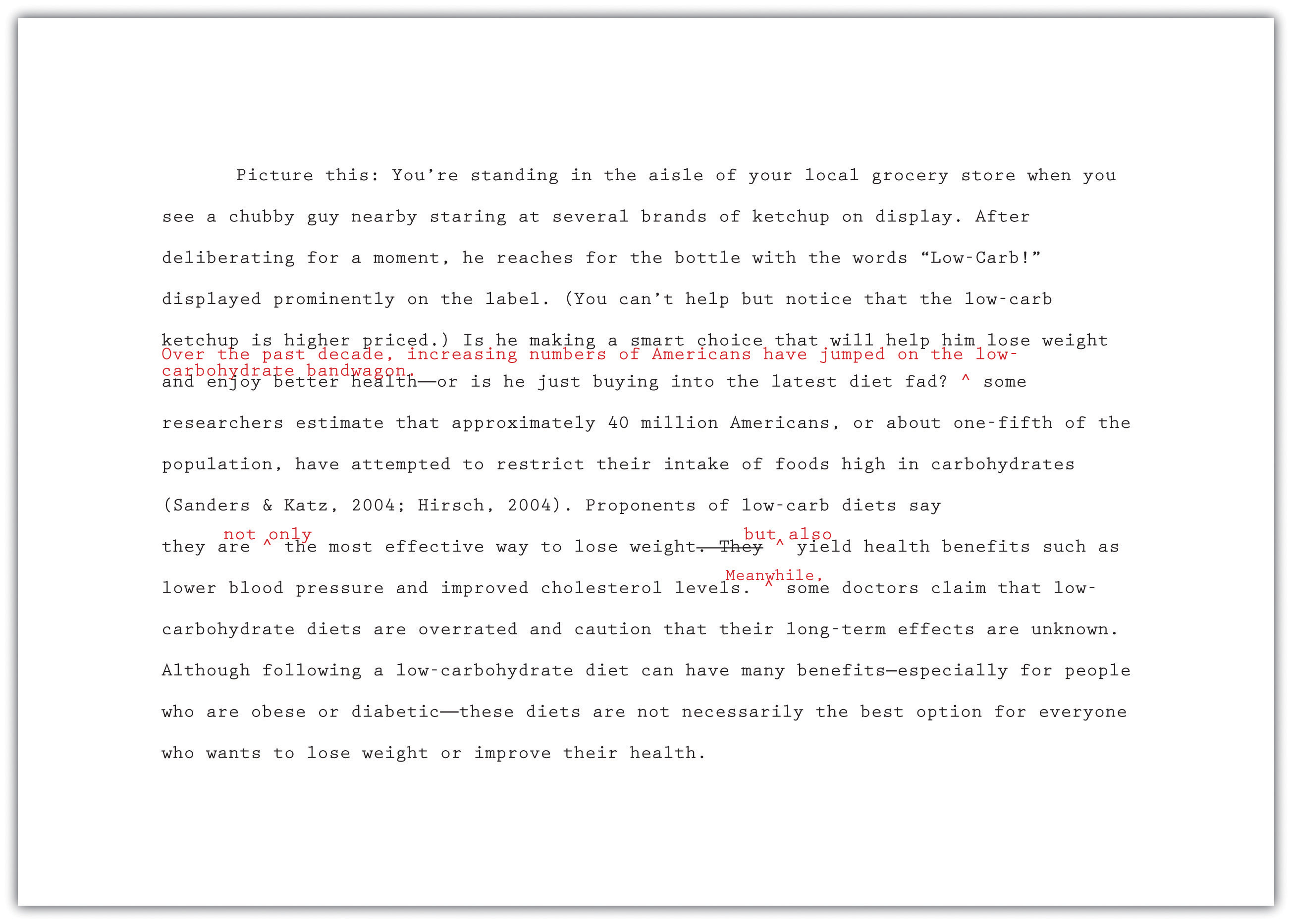
Exercise 1
Follow these steps to begin revising your paper’s overall organization.
- Print out a hard copy of your paper.
- Read your paper paragraph by paragraph. Highlight your thesis and the topic sentence of each paragraph.
- Using the thesis and topic sentences as starting points, outline the ideas you presented—just as you would do if you were outlining a chapter in a textbook. Do not look at the outline you created during prewriting. You may write in the margins of your draft or create a formal outline on a separate sheet of paper.
- Next, reread your paper more slowly, looking for how ideas flow from sentence to sentence. Identify places where adding a transition or recasting a sentence would make the ideas flow more logically.
- Review the topics on your outline. Is there a logical flow of ideas? Identify any places where you may need to reorganize ideas.
- Begin to revise your paper to improve organization. Start with any major issues, such as needing to move an entire paragraph. Then proceed to minor revisions, such as adding a transitional phrase or tweaking a topic sentence so it connects ideas more clearly.
Collaboration
Please share your paper with a classmate. Repeat the six steps and take notes on a separate piece of paper. Share and compare notes.
Tip
Writers choose transitions carefully to show the relationships between ideas—for instance, to make a comparison or elaborate on a point with examples. Make sure your transitions suit your purpose and avoid overusing the same ones. For an extensive list of transitions, see Chapter 8 "The Writing Process: How Do I Begin?", Section 8.4 "Revising and Editing".
Revise to Improve Cohesion
When you revise to improve cohesion, you analyze how the parts of your paper work together. You look for anything that seems awkward or out of place. Revision may involve deleting unnecessary material or rewriting parts of the paper so that the out-of-place material fits in smoothly.
In a research paper, problems with cohesion usually occur when a writer has trouble integrating source material. If facts or quotations have been awkwardly dropped into a paragraph, they distract or confuse the reader instead of working to support the writer’s point. Overusing paraphrased and quoted material has the same effect. Use Checklist 12.2 to review your essay for cohesion.
Checklist 12.2
Revision: Cohesion
- Does the opening of the paper clearly connect to the broader topic and thesis? Make sure entertaining quotes or anecdotes serve a purpose.
- Have I included support from research for each main point in the body of my paper?
- Have I included introductory material before any quotations? Quotations should never stand alone in a paragraph.
- Does paraphrased and quoted material clearly serve to develop my own points?
- Do I need to add to or revise parts of the paper to help the reader understand how certain information from a source is relevant?
- Are there any places where I have overused material from sources?
- Does my conclusion make sense based on the rest of the paper? Make sure any new questions or suggestions in the conclusion are clearly linked to earlier material.
As Jorge reread his draft, he looked to see how the different pieces fit together to prove his thesis. He realized that some of his supporting information needed to be integrated more carefully and decided to omit some details entirely. Read the following paragraph, first without Jorge’s revisions and then with them.
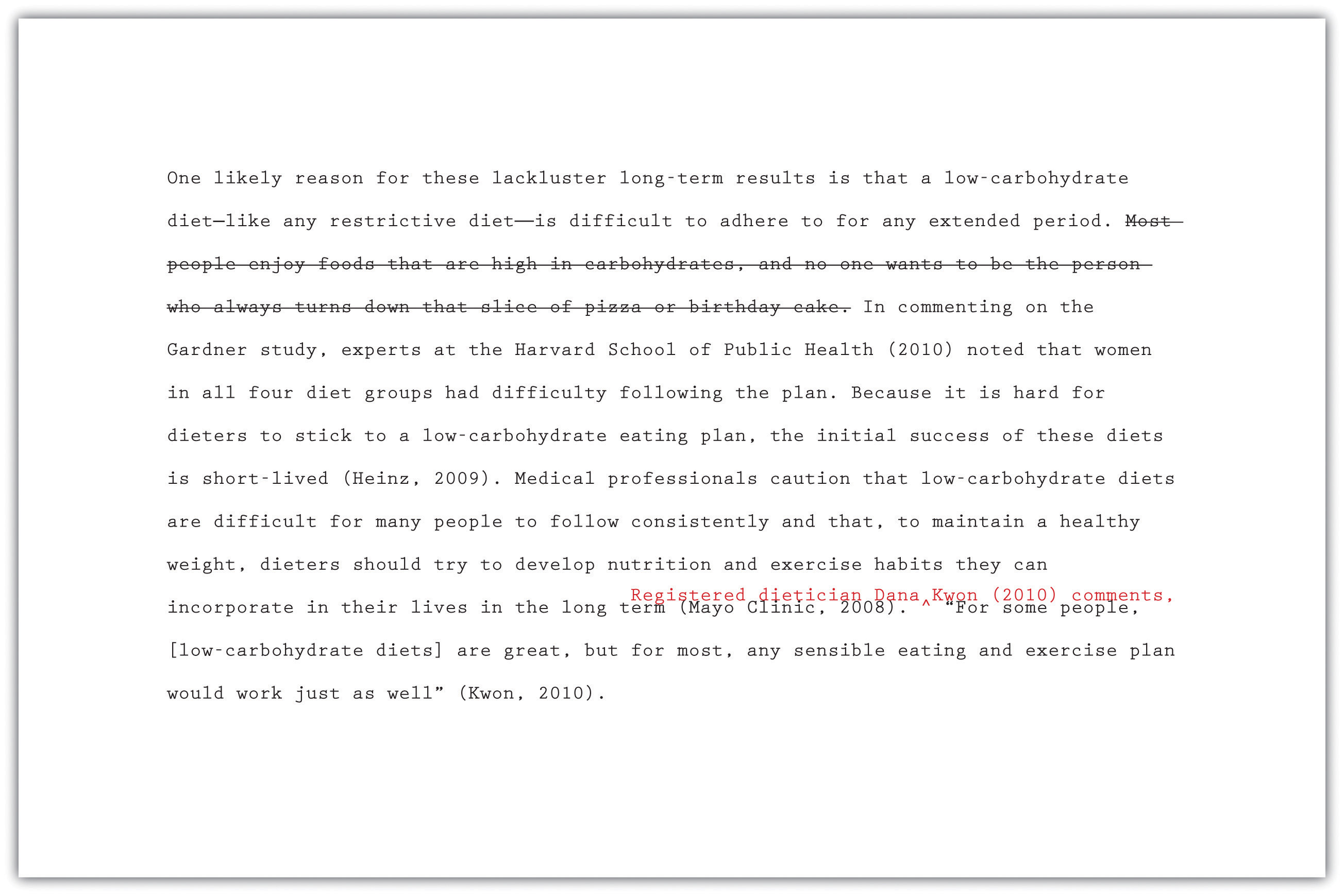
Jorge decided that his comment about pizza and birthday cake came across as subjective and was not necessary to make his point, so he deleted it. He also realized that the quotation at the end of the paragraph was awkward and ineffective. How would his readers know who Kwon was or why her opinion should be taken seriously? Adding an introductory phrase helped Jorge integrate this quotation smoothly and establish the credibility of his source.
Exercise 2
Follow these steps to begin revising your paper to improve cohesion.
- Print out a hard copy of your paper, or work with your printout from Note 12.33 "Exercise 1".
- Read the body paragraphs of your paper first. Each time you come to a place that cites information from sources, ask yourself what purpose this information serves. Check that it helps support a point and that it is clearly related to the other sentences in the paragraph.
- Identify unnecessary information from sources that you can delete.
- Identify places where you need to revise your writing so that readers understand the significance of the details cited from sources.
- Skim the body paragraphs once more, looking for any paragraphs that seem packed with citations. Review these paragraphs carefully for cohesion.
- Review your introduction and conclusion. Make sure the information presented works with ideas in the body of the paper.
- Revise the places you identified in your paper to improve cohesion.
Collaboration
Please exchange papers with a classmate. Complete step four. On a separate piece of paper, note any areas that would benefit from clarification. Return and compare notes.
Writing at Work
Understanding cohesion can also benefit you in the workplace, especially when you have to write and deliver a presentation. Speakers sometimes rely on cute graphics or funny quotations to hold their audience’s attention. If you choose to use these elements, make sure they work well with the substantive content of your presentation. For example, if you are asked to give a financial presentation, and the financial report shows that the company lost money, funny illustrations would not be relevant or appropriate for the presentation.
Using a Consistent Style and Tone
Once you are certain that the content of your paper fulfills your purpose, you can begin revising to improve styleThe unique way a writer uses language, which encompasses choices about sentence structure and word selection. and toneIn writing, the attitude a writer conveys toward the subject and the audience.. Together, your style and tone create the voice of your paper, or how you come across to readers. Style refers to the way you use language as a writer—the sentence structures you use and the word choices you make. Tone is the attitude toward your subject and audience that you convey through your word choice.
Determining an Appropriate Style and Tone
Although accepted writing styles will vary within different disciplines, the underlying goal is the same—to come across to your readers as a knowledgeable, authoritative guide. Writing about research is like being a tour guide who walks readers through a topic. A stuffy, overly formal tour guide can make readers feel put off or intimidated. Too much informality or humor can make readers wonder whether the tour guide really knows what he or she is talking about. Extreme or emotionally charged language comes across as unbalanced.
To help prevent being overly formal or informal, determine an appropriate style and tone at the beginning of the research process. Consider your topic and audience because these can help dictate style and tone. For example, a paper on new breakthroughs in cancer research should be more formal than a paper on ways to get a good night’s sleep.
A strong research paper comes across as straightforward, appropriately academic, and serious. It is generally best to avoid writing in the first person, as this can make your paper seem overly subjective and opinion based. Use Checklist 12.3 on style to review your paper for other issues that affect style and tone. You can check for consistency at the end of the writing process. Checking for consistency is discussed later in this section.
Checklist 12.3
Style
- My paper avoids excessive wordiness.
- My sentences are varied in length and structure.
- I have avoided using first-person pronouns such as I and we.
- I have used the active voice whenever possible.
- I have defined specialized terms that might be unfamiliar to readers.
- I have used clear, straightforward language whenever possible and avoided unnecessary jargon.
- My paper states my point of view using a balanced tone—neither too indecisive nor too forceful.
Word Choice
Note that word choice is an especially important aspect of style. In addition to checking the points noted on Checklist 12.3, review your paper to make sure your language is precise, conveys no unintended connotations, and is free of biases. Here are some of the points to check for:
- Vague or imprecise terms
- Slang
- Repetition of the same phrases (“Smith states…, Jones states…”) to introduce quoted and paraphrased material (For a full list of strong verbs to use with in-text citations, see Chapter 13 "APA and MLA Documentation and Formatting".)
- Exclusive use of masculine pronouns or awkward use of he or she
- Use of language with negative connotations, such as haughty or ridiculous
- Use of outdated or offensive terms to refer to specific ethnic, racial, or religious groups
Tip
Using plural nouns and pronouns or recasting a sentence can help you keep your language gender neutral while avoiding awkwardness. Consider the following examples.
- Gender-biased: When a writer cites a source in the body of his paper, he must list it on his references page.
- Awkward: When a writer cites a source in the body of his or her paper, he or she must list it on his or her references page.
- Improved: Writers must list any sources cited in the body of a paper on the references page.
Keeping Your Style Consistent
As you revise your paper, make sure your style is consistent throughout. Look for instances where a word, phrase, or sentence just does not seem to fit with the rest of the writing. It is best to reread for style after you have completed the other revisions so that you are not distracted by any larger content issues. Revising strategies you can use include the following:
- Read your paper aloud. Sometimes your ears catch inconsistencies that your eyes miss.
- Share your paper with another reader whom you trust to give you honest feedback. It is often difficult to evaluate one’s own style objectively—especially in the final phase of a challenging writing project. Another reader may be more likely to notice instances of wordiness, confusing language, or other issues that affect style and tone.
- Line-edit your paper slowly, sentence by sentence. You may even wish to use a sheet of paper to cover everything on the page except the paragraph you are editing—that forces you to read slowly and carefully. Mark any areas where you notice problems in style or tone, and then take time to rework those sections.
On reviewing his paper, Jorge found that he had generally used an appropriately academic style and tone. However, he noticed one glaring exception—his first paragraph. He realized there were places where his overly informal writing could come across as unserious or, worse, disparaging. Revising his word choice and omitting a humorous aside helped Jorge maintain a consistent tone. Read his revisions.
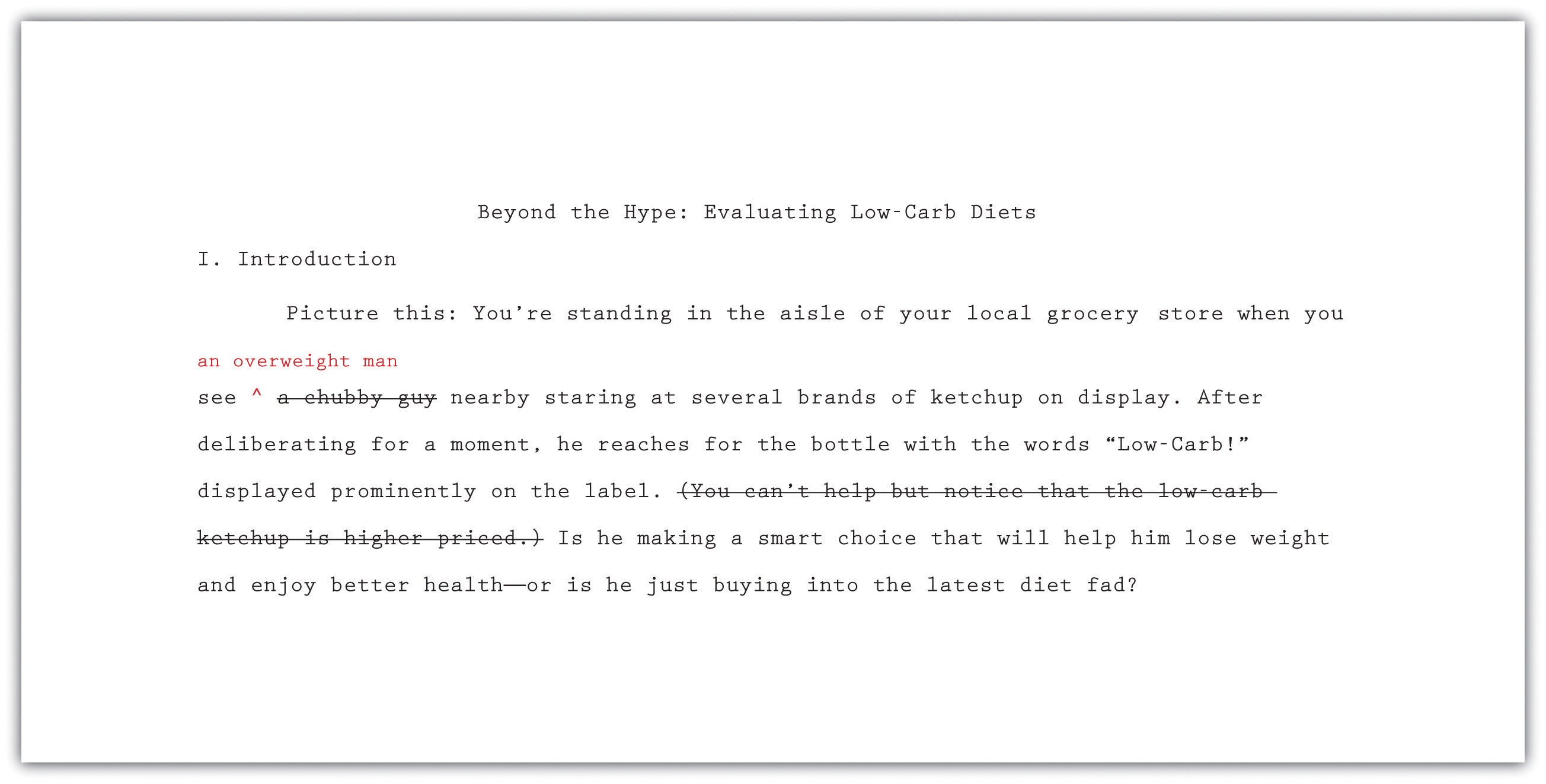
Exercise 3
Using Checklist 12.3, line-edit your paper. You may use either of these techniques:
- Print out a hard copy of your paper, or work with your printout from Note 12.33 "Exercise 1". Read it line by line. Check for the issues noted on Checklist 12.3, as well as any other aspects of your writing style you have previously identified as areas for improvement. Mark any areas where you notice problems in style or tone, and then take time to rework those sections.
- If you prefer to work with an electronic document, use the menu options in your word-processing program to enlarge the text to 150 or 200 percent of the original size. Make sure the type is large enough that you can focus on only one paragraph at a time. Read the paper line by line as described in step 1. Highlight any areas where you notice problems in style or tone, and then take time to rework those sections.
Collaboration
Please exchange papers with a classmate. On a separate piece of paper, note places where the essay does not seem to flow or you have questions about what was written. Return the essay and compare notes.
Editing Your Paper
After revising your paper to address problems in content or style, you will complete one final editorial review. Perhaps you already have caught and corrected minor mistakes during previous revisions. Nevertheless, give your draft a final edit to make sure it is error-free. Your final edit should focus on two broad areas:
- Errors in grammar, mechanics, usage, and spelling
- Errors in citing and formatting sources
For in-depth information on these two topics, see Chapter 2 "Writing Basics: What Makes a Good Sentence?" and Chapter 13 "APA and MLA Documentation and Formatting".
Correcting Errors
Given how much work you have put into your research paper, you will want to check for any errors that could distract or confuse your readers. Using the spell-checking feature in your word-processing program can be helpful—but this should not replace a full, careful review of your document. Be sure to check for any errors that may have come up frequently for you in the past. Use Checklist 12.4 to help you as you edit:
Checklist 12.4
Grammar, Mechanics, Punctuation, Usage, and Spelling
- My paper is free of grammatical errors, such as errors in subject-verb agreement and sentence fragments. (For additional guidance on grammar, see Chapter 2 "Writing Basics: What Makes a Good Sentence?".)
- My paper is free of errors in punctuation and mechanics, such as misplaced commas or incorrectly formatted source titles. (For additional guidance on punctuation and mechanics, see Chapter 3 "Punctuation".)
- My paper is free of common usage errors, such as alot and alright. (For additional guidance on correct usage, see Chapter 4 "Working with Words: Which Word Is Right?".)
- My paper is free of spelling errors. I have proofread my paper for spelling in addition to using the spell-checking feature in my word-processing program.
- I have checked my paper for any editing errors that I know I tend to make frequently.
Checking Citations and Formatting
When editing a research paper, it is also important to check that you have cited sources properly and formatted your document according to the specified guidelines. There are two reasons for this. First and foremost, citing sources correctly ensures that you have given proper credit to other people for ideas and information that helped you in your work. Second, using correct formatting establishes your paper as one student’s contribution to the work developed by and for a larger academic community. Increasingly, American Psychological Association (APA) style guidelines are the standard for many academic fields. Modern Language Association (MLA) is also a standard style in many fields. Use Checklist 12.5 to help you check citations and formatting.
Checklist 12.5
Citations and Formatting
- Within the body of my paper, each fact or idea taken from a source is credited to the correct source.
- Each in-text citation includes the source author’s name (or, where applicable, the organization name or source title) and year of publication. I have used the correct format of in-text and parenthetical citations.
- Each source cited in the body of my paper has a corresponding entry in the references section of my paper.
- My references section includes a heading and double-spaced, alphabetized entries.
- Each entry in my references section is indented on the second line and all subsequent lines.
- Each entry in my references section includes all the necessary information for that source type, in the correct sequence and format.
- My paper includes a title page.
- My paper includes a running head.
- The margins of my paper are set at one inch. Text is double spaced and set in a standard 12-point font.
For detailed guidelines on APA and MLA citation and formatting, see Chapter 13 "APA and MLA Documentation and Formatting".
Writing at Work
Following APA or MLA citation and formatting guidelines may require time and effort. However, it is good practice for learning how to follow accepted conventions in any professional field. Many large corporations create a style manual with guidelines for editing and formatting documents produced by that corporation. Employees follow the style manual when creating internal documents and documents for publication.
During the process of revising and editing, Jorge made changes in the content and style of his paper. He also gave the paper a final review to check for overall correctness and, particularly, correct APA or MLA citations and formatting. Read the final draft of his paper.
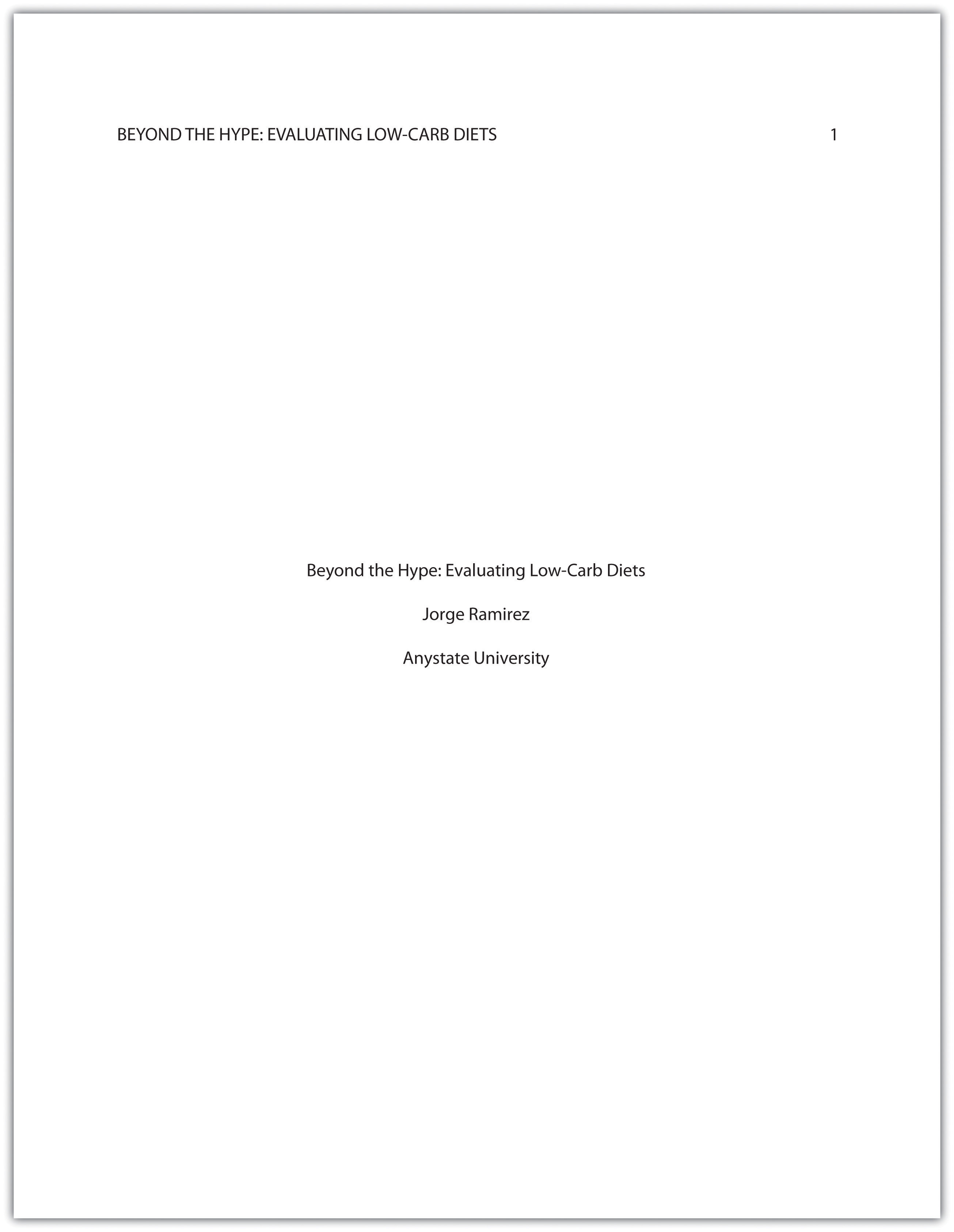
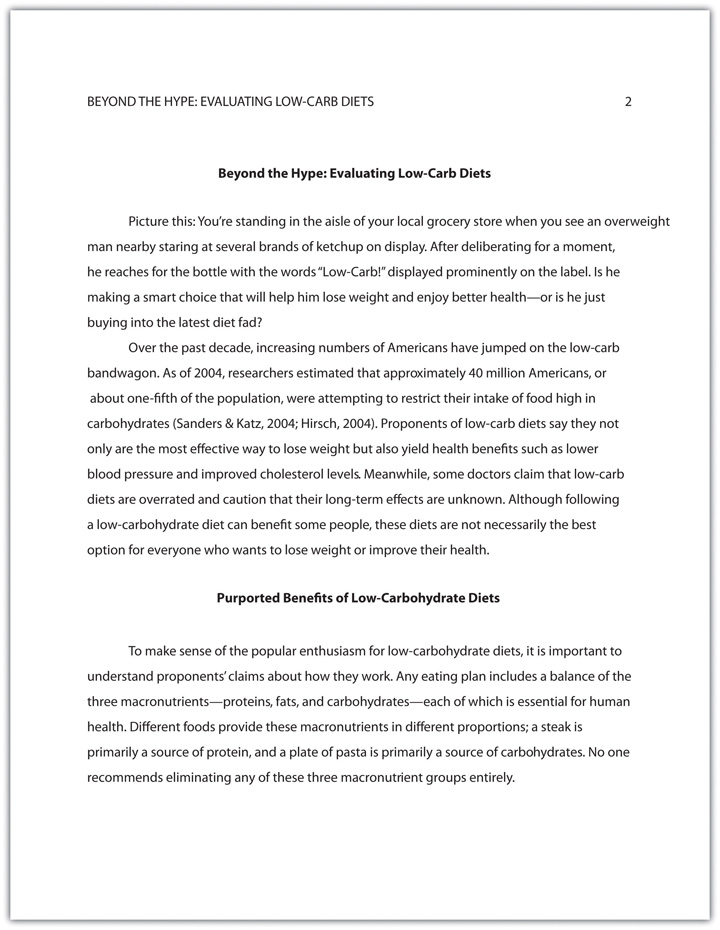
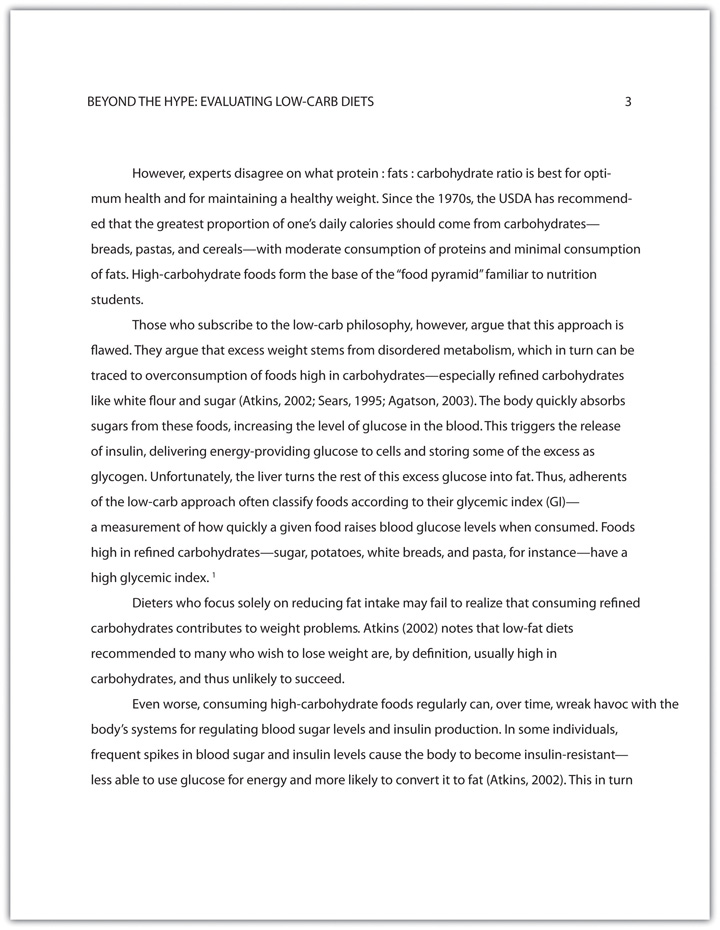
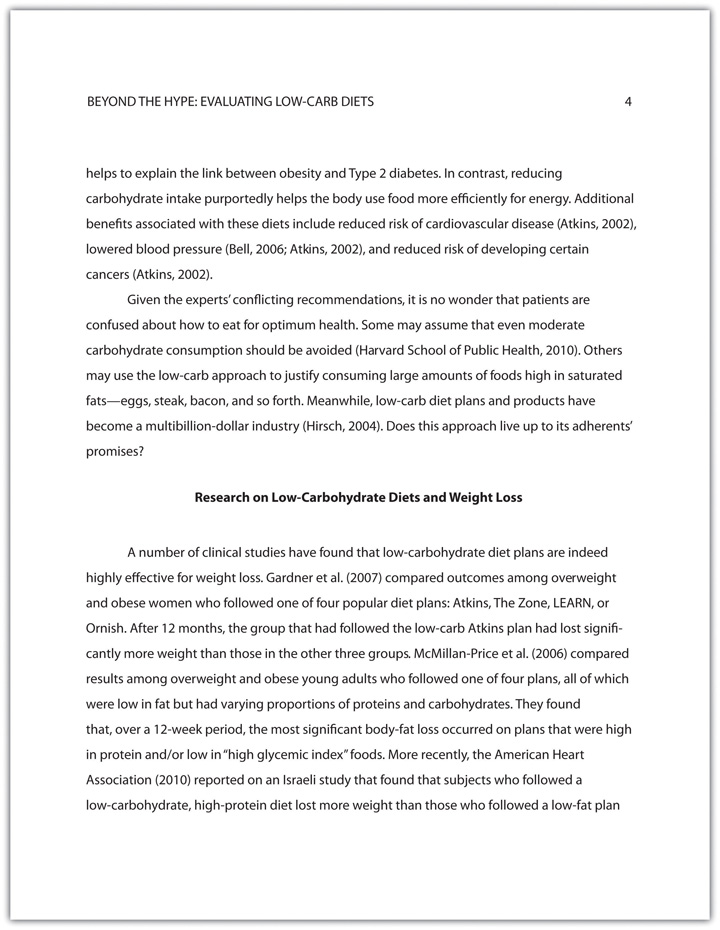
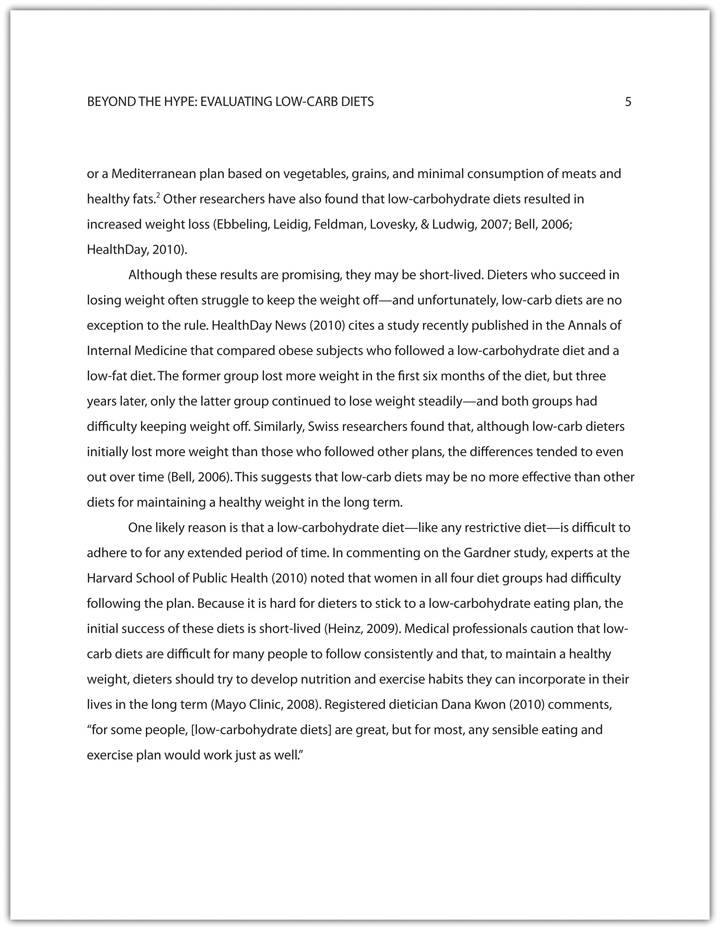
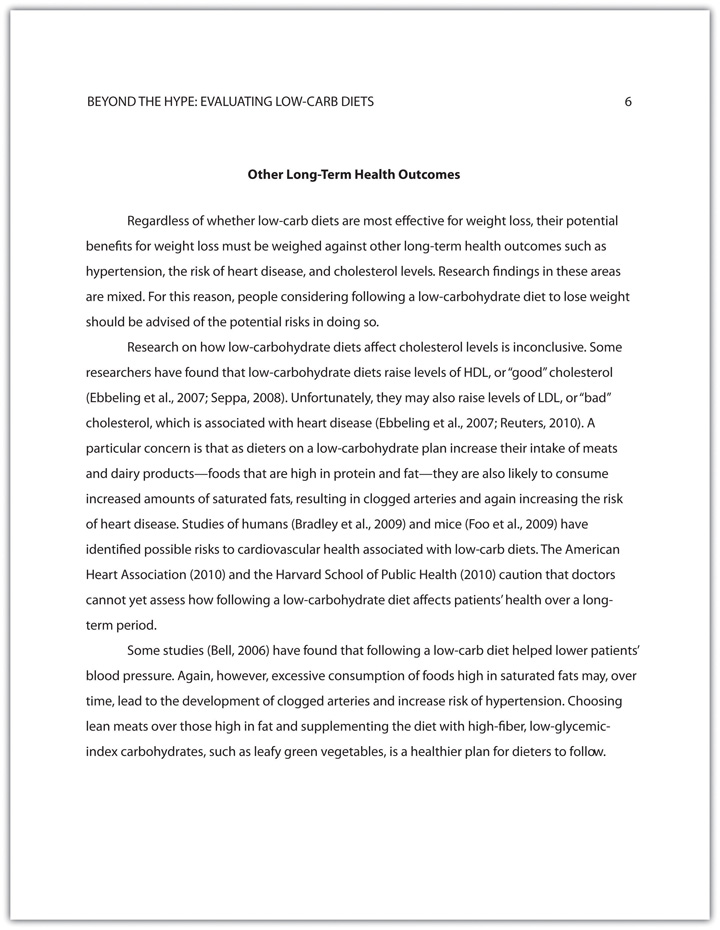
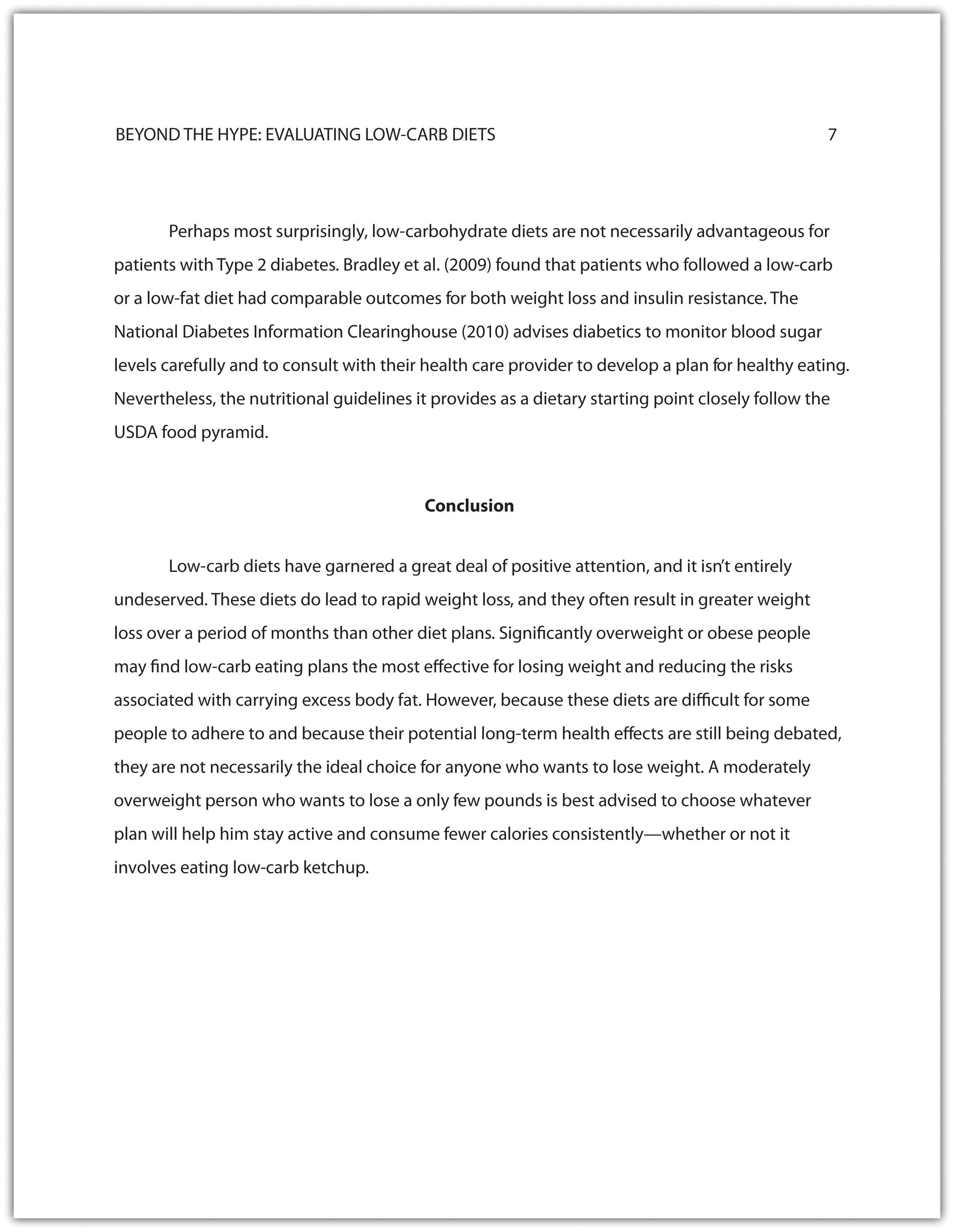
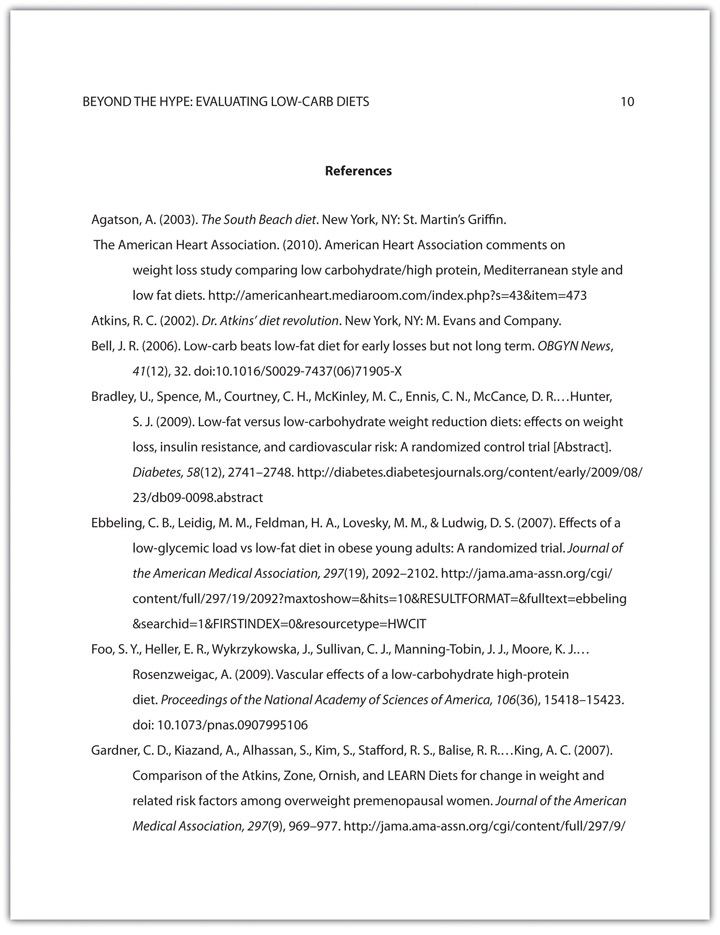
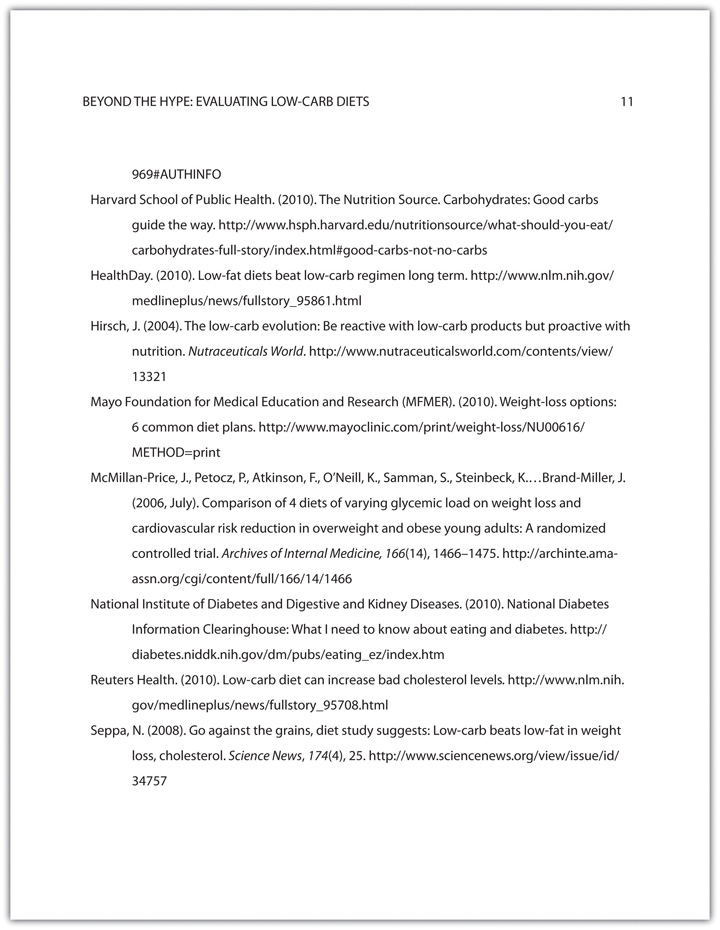
Key Takeaways
- Organization in a research paper means that the argument proceeds logically from the introduction to the body to the conclusion. It flows logically from one point to the next. When revising a research paper, evaluate the organization of the paper as a whole and the organization of individual paragraphs.
- In a cohesive research paper, the elements of the paper work together smoothly and naturally. When revising a research paper, evaluate its cohesion. In particular, check that information from research is smoothly integrated with your ideas.
- An effective research paper uses a style and tone that are appropriately academic and serious. When revising a research paper, check that the style and tone are consistent throughout.
- Editing a research paper involves checking for errors in grammar, mechanics, punctuation, usage, spelling, citations, and formatting.




